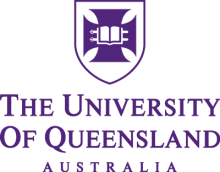Advocacy for students and academics with disabilities is at a pivot point after decades of false starts and policy neglect, according to a leading campaigner.
Paul Harpur, a blind University of Queensland law professor recognised for his disability work, said recent developments heralded “the beginning of the end” to the barriers that had denied his community its place in the academy.
“It’s an inflection point,” Professor Harpur said. “Disabilities have been overlooked for a long time. But now we’ve got universities saying we really need to step forward and do something different.”
Australia’s government committed to “targeted consultations” on the Universities Accord reforms, after the accord panel’s February report drew protests over misleading data and the absence of a participation target for students with disabilities.
“I’ve…heard concerns from the disability community that the accord didn’t get everything right,” education minister Jason Clare told a May conference. “I hear you. We need to get it right in the implementation. And we will, working with you.”
The Department of Education said it had convened a “round-table discussion” with disability stakeholders on 20 May, with further meetings planned for late June, July and August.
Meanwhile, the global network Universitas 21 (U21) is rolling out a “disability inclusion mapping” exercise following its April presidential symposium in Hong Kong.
The 29-question survey will quiz the network’s 29 members on things such as their research into disability rights, their disability awareness training for staff and the treatment of disability in their governance structures and strategic plans.
Professor Harpur, who is leading the exercise, said he would use the data for academic research and internal reports. He is also co-leader of a “Disabilities Communities of Practice” formed by U21 last year to champion “workplace ability equity” among its members.
He said Australian university structures dated from a time when about 2 per cent of students were recognised as having disabilities. Now the figure was about 10 per cent. “That’s 144,000 students across the country,” he said.
Retrofitting university infrastructure for such a large cohort made no sense, he said. “Finding ways to include people up front is cheaper. Building after the fact is stupid.”
He said the prospect of federal government caps to universities’ lucrative international enrolments had forced administrators to rethink their approach to disabled students and staff. “If you cut discretionary funding, there’s just less money. They’ve got to look at disability and say, ‘How can we do this more efficiently?’”
Professor Harpur said activism by students and young academics was also driving a sea change in disability awareness among university leaders. He said people who had been schoolchildren when the United Nations adopted the 2006 Convention on the Rights of Persons with Disabilities, which enshrines the right to “lifelong learning without discrimination and on an equal basis with others”, were now in their twenties and thirties.
“The younger generation…with disabilities is saying, ‘I’ve heard about this as a right for years. Where is it?’”
Sandra Jones, former pro vice-chancellor of the Australian Catholic University, said staff and students were encouraged to divulge their own disabilities when institutions got behind the work of disability advocates such as Professor Harpur.
“We need…universities to back them 100 per cent and say, ‘We’re proud to have this person on our team.’ That makes it more viable for other staff and students to disclose.”
Register to continue
Why register?
- Registration is free and only takes a moment
- Once registered, you can read 3 articles a month
- Sign up for our newsletter
Subscribe
Or subscribe for unlimited access to:
- Unlimited access to news, views, insights & reviews
- Digital editions
- Digital access to THE’s university and college rankings analysis
Already registered or a current subscriber?











